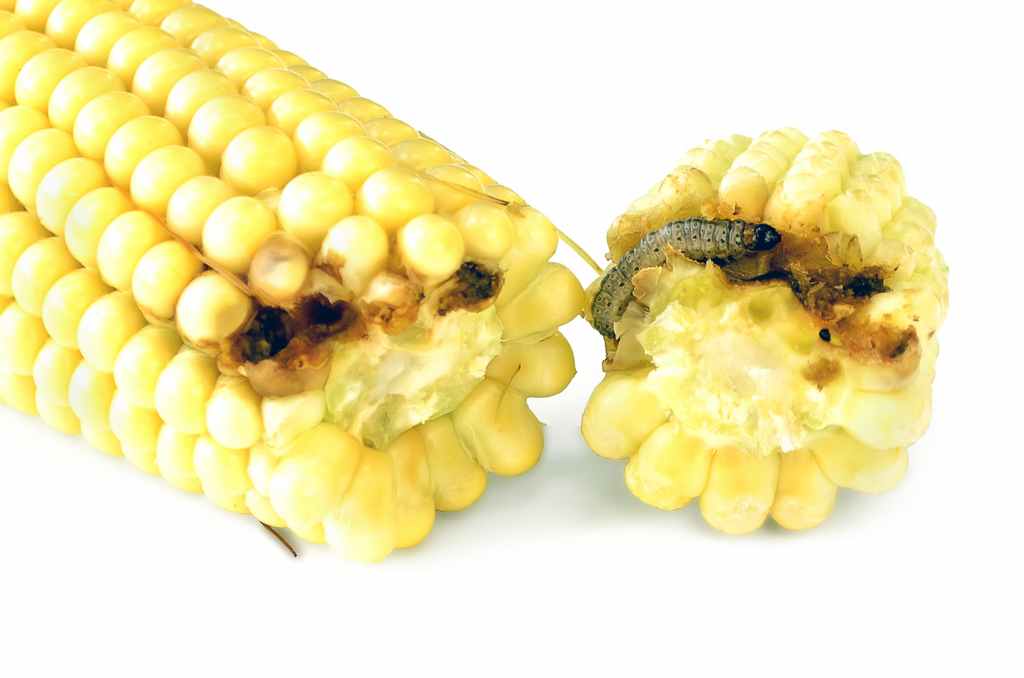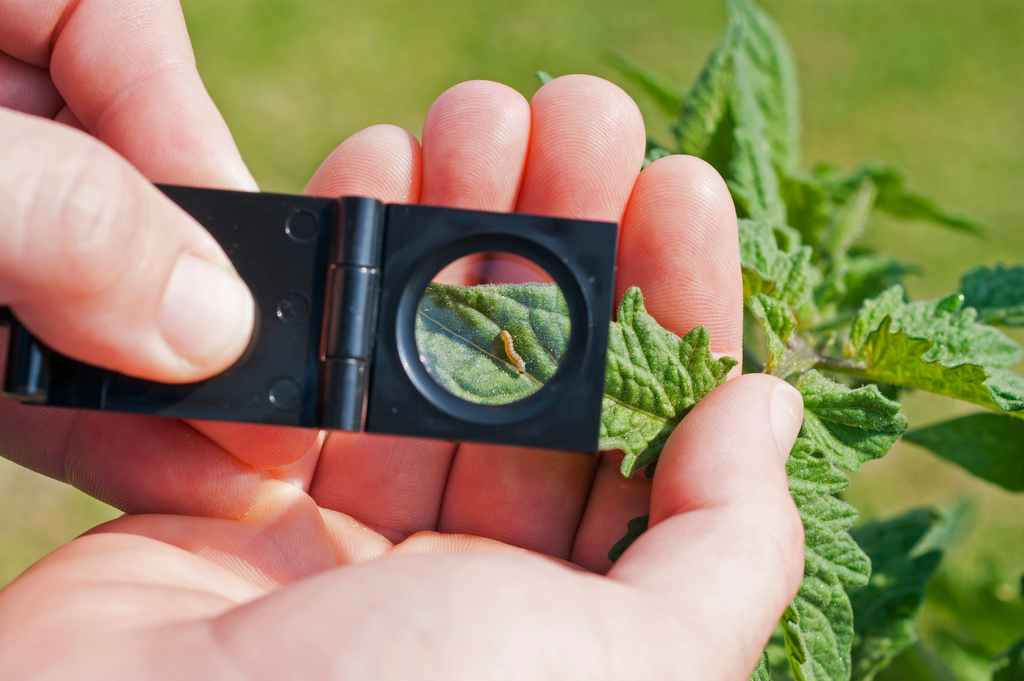When it comes producing food, while we all try not to think about it, it is understandable that some unwanted additions to our food are to be expected.
But, the minimum amount of “defects” allowed in food by the U.S. Food and Drug Administration (FDA) might surprise you.
According to the FDA, it is “economically impractical to grow, harvest, or process raw products that are totally free of non-hazardous, naturally occurring, unavoidable defects”.
The FDA uses the term “defect” to describe the minimum amount of rodent and other animal feces, maggot and insect fragments, animal and human hairs, parasitic cysts, and rot allowed in your food.



FDA’s Food Defect Action Levels Handbook
The Food Defect Action Levels Handbook is a publication of the U.S. Food and Drug Administration detailing acceptable levels of food contamination from sources such as maggots, thrips, insect fragments, “foreign matter”, mold, rodent hairs, and insect and mammalian feces.
- Learn about proper hygiene, cross contamination, cold and hot food safety, foodborne pathogens, and best practices to prevent foodborne illness.
- Food Manager Training & ANSI Certification - $99.00
- Food Handler Training - only $7.00!
- HACCP Training: 16hr/4hr/1hr
- Food Allergy Training - $15.00
- Enter Promo "train10off" at Checkout
The publication details the acceptable amounts of contaminants on a per food basis, listing both the defect source (pre-harvest infection, processing infestation, processing contamination, etc.) and significance (aesthetic, potential health hazard, mouth/tooth injury, etc.).



For example, foods like canned fruit, cornmeal, and chocolate are allowed whole insects, insect parts and insect larvae.
Most fruit are allowed to have bugs in them, as long as they don’t cause the fruit to rot and tomato products like pizza sauce are allowed to contain up to 30 fruit fly eggs are allowed per 100 grams.



FDA Defect Action Levels
The FDA listing of “Food Defect Action Levels” which covers many of the products contained in this manual, includes approximately 200 action levels for various types of defects in some 75 individual food products.
Defect action levels are limits set by the FDA to define the extent of contamination acceptable in food. The action level represents the limit at or above which FDA will take legal action against a product to remove it from the market as adulterated (“unfit for food”).
These levels have been established in recognition that it is not possible to grow, harvest, and process crops that are totally free of natural defects.
Table: FDA Defect Action Levels
FOOD PRODUCT | DEFECT LEVEL (Average sample unless otherwise indicated) |
|---|---|
| SEAFOOD | |
| Blue Fin and other Fresh Water Herring | 60 parasitic cysts per 100 fish (fish averaging 1 pound or less) or 100 pounds (fish averaging over 1 pound) |
| Red Fish and Ocean Perch | 3 % of the fillets examined contain 1 or more copepods (tiny crustaceans) accompanied by pus pockets |
| Whitefish, Tullibees, Ciscoes, Inconnus, and Chubs | 50 parasitic cysts per 100 pounds (whole or fillets) |
| VEGETABLES | |
| Beets (canned) | 5% or more pieces by weight with dry rot |
| Broccoli (frozen) | 60 or more aphids and/or thrips and/or mites per 100 grams |
| Corn, sweet(canned) | 2 or more 3 mm or longer larvae, cast skins, larval or cast skin fragments, the aggregate length of insects or insect parts exceeds 12 mm in 24 pounds |
| Brussels Sprouts (frozen) | 30 or more aphids and/or thrips per 100 grams |
| Mushrooms (canned and dried) | 20 or more maggots of any size per 100 grams of drained mushrooms or 15 grams of dried mushrooms, 5 or more maggots 2 mm or longer per 100 grams of drained mushrooms or 15 grams of dried mushrooms, 75 mites per 100 grams drained mushrooms or 15 grams of dried mushrooms |
| Spinach (canned or frozen) | 50 or more aphids, thrips and/or mites per 100 grams, 2 or more 3 mm or longer larvae and/or larval fragments or spinach worms (caterpillars) whose aggregate length exceeds 12 mm are present in 24 pounds |
| Tomatoes (canned) | 10 or more fly eggs per 500 grams, 5 or more fly eggs and 1 or more maggots per 500 grams, 2 or more maggots per 500 grams |
| Tomato paste or pizza sauce | 30 or more fly eggs per 100 grams, 15 or more fly eggs and 1 or more maggots per 100 grams, 2 or more maggots per 100 grams (in a minimum of 12 subsamples) |
| FRUITS | |
| Apricots (canned) | 2% or more by count has been damaged or infected by insects |
| Berries | 4 larvae or 10 whole insects per 500 grams or 10 or more whole insects or equivalent per 500 grams (excluding thrips, aphids, and mites) |
| Cherries (fresh, canned, or frozen) | 4% or more pieces are rejects due to insects other than maggots |
| Citrus fruit juices (canned) | 5 or more Drosophila and other fly eggs per 250 ml or 1 or more maggots per 250 ml |
| Dates (chopped, sliced, macerated) | 5 or more dead insects (whole or equivalent) per 100 grams |
| Figs | 10% or more by count are insect-infested |
| Peaches (canned and frozen) | 12 – 1lb cans – one or more larvae and/or larval fragments whose aggregate length exceeds 5 mm |
| GRAINS, NUTS, BEANS, ETC. | |
| Wheat | 32 or more insect-damaged kernels per 100 grams, 9 mg or more rodent excreta pellets and/or pellet fragments per kilogram |
| Wheat flour | 75 or more insect fragments per 50 grams, 1 or more rodent hairs per 50 grams (1 cup flour = 136 g = 4.8 oz) |
| Cornmeal | 25 or more insect fragments per 25 grams, 1 or more rodent hairs per 25 grams or 1 or more rodent excreta fragment per 50 grams |
| Macaroni and Noodle Products | 225 insect fragments or more per 225 grams (in 6 or more subsamples), 4.5 rodent hairs or more per 225 grams (in 6 or more subsamples) |
| Peas and Beans (dried) | 5% or more by count insect-infested and/or insect-damaged by storage insects (in a minimum of 12 subsamples) |
| Peanuts (shelled) | 20 or more whole insects or equivalent in 100-pound bag |
| Coffee beans | 10% or more by count are insect-infested or insect-damaged |
| Hops | 2,500 aphids or more per 10 grams |
| Cocoa beans | 75 or more insect fragments per subsample of 50 grams when 6 subsamples are examined, 6 or more subsamples is 2 or more rodent hairs per subsample of 50 grams |
| Chocolate and chocolate liquor | 60 or more insect fragments per 100 grams (in 6 – 100 g subsamples), 1 or more rodent hairs per 100 grams (in 6 – 100-gram subsamples) |
| Peanut butter | 30 or more insect fragments per 100 grams, 1 or more rodent hairs per 100 grams |
| SPICES | |
| Cinnamon (ground) | 400 or more insect fragments per 50 grams |
| Curry (powder) | 100 or more insect fragments per 25 grams, 4 or more rodent hairs per 25 grams |
| Fennel Seed | 20% or more of subsamples contain insects, 20% or more of subsamples contain mammalian excreta |
| Ginger (whole) | 3% or more pieces by weight are insect-infested, 3 mg or more of mammalian excreta per pound |
| Nutmeg (ground) | 100 or more insect fragments per 10 grams, 1 or more rodent hairs per 10 grams |
| Oregano (ground) | 1250 or more insect fragments per 10 grams, 5 or more rodent hairs per 10 grams |
| Pepper (ground) | 475 or more insect fragments per 50 grams, 2 or more rodent hairs per 50 grams |
| Sage (ground) | 200 or more insect fragments per 10 grams, 9 or more rodent hairs per 10 grams |
| Thyme (ground) | 925 or more insect fragments per 10 grams, 2 or more rodent hairs per 10 grams |
Summary
It is understandable that in the production of our food – some unwanted additions are to be expected. But, the minimum amount of “defects” allowed in food by the FDA might surprise you.
The Food Defect Action Levels Handbook by the FDA details the acceptable levels of food contamination from sources such as maggots, thrips, insect fragments, “foreign matter”, mold, rodent hairs, and insect and mammalian feces.






